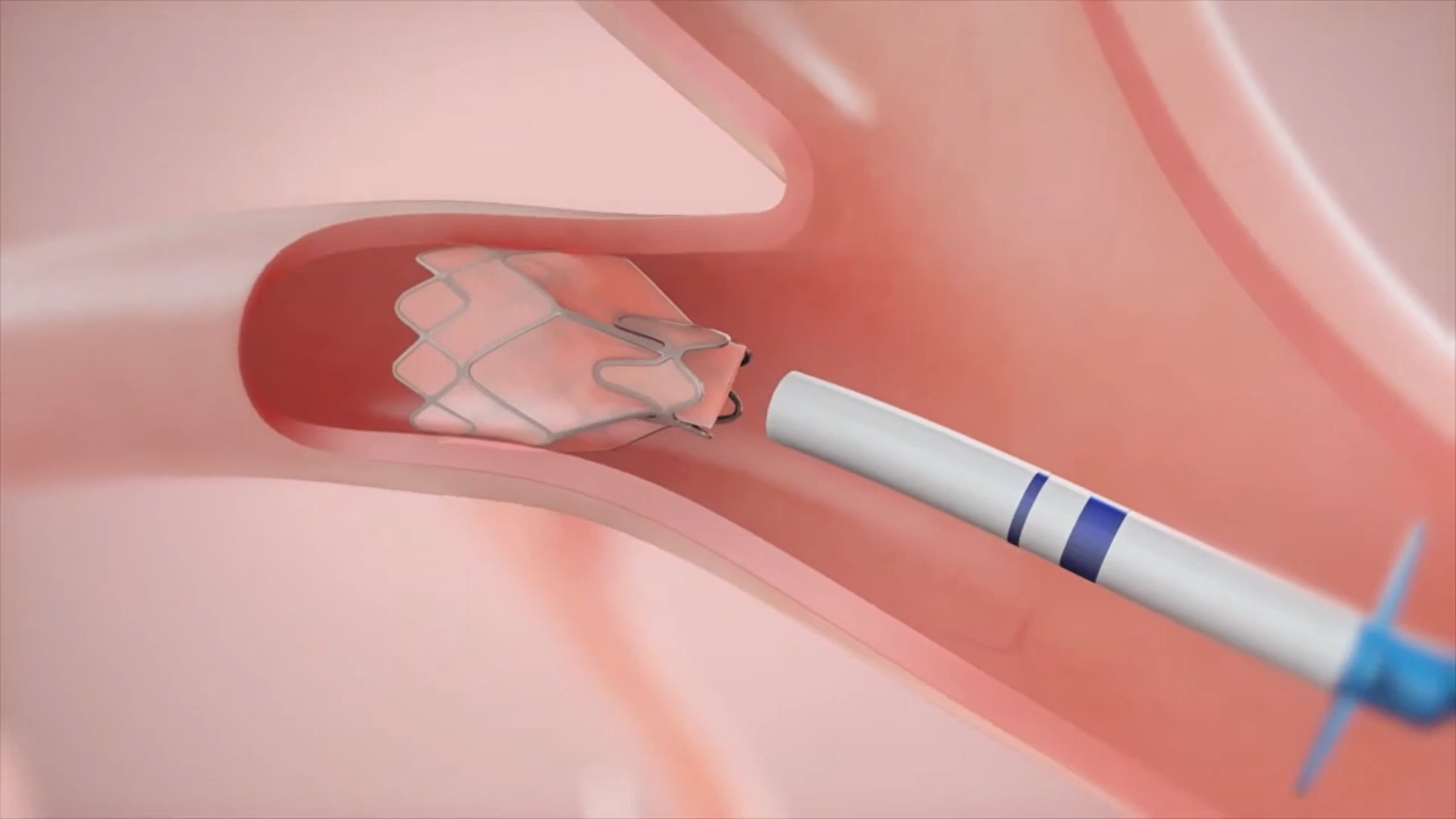No mask. No hose. Just sleep.
Hypoglossal nerve stimulation is a mask-free solution for people with obstructive sleep apnea who have tried and struggled with CPAP.
What is Sleep Apnoea?
COPD, or chronic obstructive pulmonary disease, is a persistent lung condition that hinders normal breathing. It is frequently linked to prolonged smoking or exposure to harmful substances.


Signs and Symptoms
The most common signs and symptoms include:
- Loud snoring
- Morning headaches
- Difficulty Concentrating
- Gasping for air during sleep
- Excessive daytime sleepiness
- Difficulty falling and staying asleep
If you’re concerned about the quality of your sleep, you should talk to your doctor. Some of the symptoms of obstructive sleep apnoea and central sleep apnoea overlap.
Ways to Treat Sleep Apnoea
Airway Pressure Devices
(e.g. CPAP)

Oral Appliances

Hypoglossal Nerve Stimulation (HNS)

Surgery

Hypoglossal Nerve Stimulation
for Sleep Apnoea
Hypoglossal nerve stimulation (HNS) works inside your body to treat the root cause of sleep apnea. Simply turn on your therapy with a handheld remote when you're ready to sleep.
This therapy is designed for individuals who have not found success with or are unable to tolerate traditional treatments like continuous positive airway pressure (CPAP).
How it Works
Hypoglossal nerve stimulation is a procedure involves surgically implanting a device that monitors sleep-related breathing patterns. When airway obstruction is detected, the device stimulates the hypoglossal nerve, controlling tongue movement.
This stimulation helps prevent airway collapse during sleep, reducing OSA symptoms and improving overall sleep quality.


You Might Be a Candidate For EBV if..
- You have moderate to severe obstructive sleep apnoea.
- You are unable to use or get consistent benefit from CPAP.
- You are not significantly obese.
- You are age 18 or above.
Is HGNS Right For Me?
Hypoglossal nerve stimulation might be just the solution
you were looking for.
Frequently Asked Questions
Individuals with moderate to severe obstructive sleep apnea who have not responded well to traditional treatments like continuous positive airway pressure (CPAP) may be candidates for hypoglossal nerve stimulation.
Yes, HGNS involves a surgical procedure to implant a small device that monitors breathing patterns and delivers mild stimulation to the hypoglossal nerve to prevent airway collapse.
The benefits may include improved sleep quality, reduced snoring, and alleviation of symptoms associated with obstructive sleep apnea.
Recovery times vary, but most individuals can return to normal activities within a few weeks. It’s essential to follow post-operative care instructions provided by the healthcare team.
As with any surgical procedure, there are potential risks and side effects. These can include infection, device-related issues, or discomfort at the implantation site.
Breathe easier,
Do more & Enjoy life.
Endobronchial valve placement is a minimally invasive treatment option for COPD/ Emphysema.
What is COPD?

COPD, or chronic obstructive pulmonary disease, is a persistent lung condition that hinders normal breathing. It is frequently linked to prolonged smoking or exposure to harmful substances.
Signs and Symptoms

The most common signs and symptoms include:
- Fatigue
- Wheezing
- Frequent respiratory infections
- Persistent cough (dry or with mucus)
- Bluish nails and lips with slight exertion
- Shortness of breath during routine activities
If you’re concerned about the quality respiratory health, you should talk to your doctor. Some of the symptoms of emphysema and chronic bronchitis overlap.
Ways to Treat COPD/ Emphysema
Medications

Long Term Oxygen Therapy (LTOT)

Endobronchial Valve Placement (EBV)

Lung Volume Reduction Surgery (LVRS)

Endobronchial Valve Placement
For COPD/ Emphysema
Endobronchial valve placement is a minimally invasive procedure where one-way valves are inserted into the airways of a specific lung lobe. These valves facilitate exhalation, reduce air trapping, and improve lung function.

How It Works
These tiny, one-way valves are inserted into the air passages, redirecting airflow away from damaged or diseased lung regions. This helps to reduce hyperinflation in the affected areas and improves overall lung function.
By preventing air from entering the diseased portions of the lungs during inhalation, EBVs allow for more efficient exhalation, relieving symptoms and enhancing the patient's ability to breathe.
You Might Be a Candidate For EBV if..

- Diagnosed with COPD or Emphysema
- Breathing difficulties despite taking medications as directed
Is EBV Right For Me?
Endobronchial valve placement might be just the solution you were looking for.
Frequently Asked Questions
Endobronchial valve placement improves COPD symptoms by strategically inserting one-way valves into the airways, facilitating better lung function and reducing air trapping.
No, it is a minimally invasive procedure performed by pulmonologists. It involves inserting valves into specific lung lobes to enhance respiratory efficiency.
Individuals with COPD, particularly those with a predominant presence of emphysema, may be considered for this treatment option after a thorough evaluation by healthcare professionals.
The procedure aims to alleviate COPD symptoms, such as shortness of breath, by improving lung function. It can also help in reducing air leaks in certain cases.
While generally safe, endobronchial valve placement may have some risks. These can be discussed with healthcare providers and may include complications like pneumothorax or infection. It’s important to weigh the potential benefits against any risks before deciding on the treatment.
Breathe easier,
Do more & Enjoy life.
Endobronchial valve placement is a minimally invasive treatment option for COPD/ Emphysema.
What is COPD?

COPD, or chronic obstructive pulmonary disease, is a persistent lung condition that hinders normal breathing. It is frequently linked to prolonged smoking or exposure to harmful substances.
Signs and Symptoms

The most common signs and symptoms include:
- Fatigue
- Wheezing
- Frequent respiratory infections
- Persistent cough (dry or with mucus)
- Bluish nails and lips with slight exertion
- Shortness of breath during routine activities
If you’re concerned about the quality respiratory health, you should talk to your doctor. Some of the symptoms of emphysema and chronic bronchitis overlap.
Ways to Treat COPD/ Emphysema
Medications

Long Term Oxygen Therapy (LTOT)

Endobronchial Valve Placement (EBV)

Lung Volume Reduction Surgery (LVRS)

Endobronchial Valve Placement For COPD/ Emphysema
Endobronchial valve placement is a minimally invasive procedure where one-way valves are inserted into the airways of a specific lung lobe. These valves facilitate exhalation, reduce air trapping, and improve lung function.

How It Works
These tiny, one-way valves are inserted into the air passages, redirecting airflow away from damaged or diseased lung regions. This helps to reduce hyperinflation in the affected areas and improves overall lung function.
By preventing air from entering the diseased portions of the lungs during inhalation, EBVs allow for more efficient exhalation, relieving symptoms and enhancing the patient's ability to breathe.
You Might Be a Candidate For EBV if..

- Diagnosed with COPD or Emphysema
- Breathing difficulties despite taking medications as directed
Is EBV Right For Me?
Endobronchial valve placement might be just the solution you were looking for.
Frequently Asked Questions
Endobronchial valve placement improves COPD symptoms by strategically inserting one-way valves into the airways, facilitating better lung function and reducing air trapping.
No, it is a minimally invasive procedure performed by pulmonologists. It involves inserting valves into specific lung lobes to enhance respiratory efficiency.
Individuals with COPD, particularly those with a predominant presence of emphysema, may be considered for this treatment option after a thorough evaluation by healthcare professionals.
The procedure aims to alleviate COPD symptoms, such as shortness of breath, by improving lung function. It can also help in reducing air leaks in certain cases.
While generally safe, endobronchial valve placement may have some risks. These can be discussed with healthcare providers and may include complications like pneumothorax or infection. It’s important to weigh the potential benefits against any risks before deciding on the treatment.
